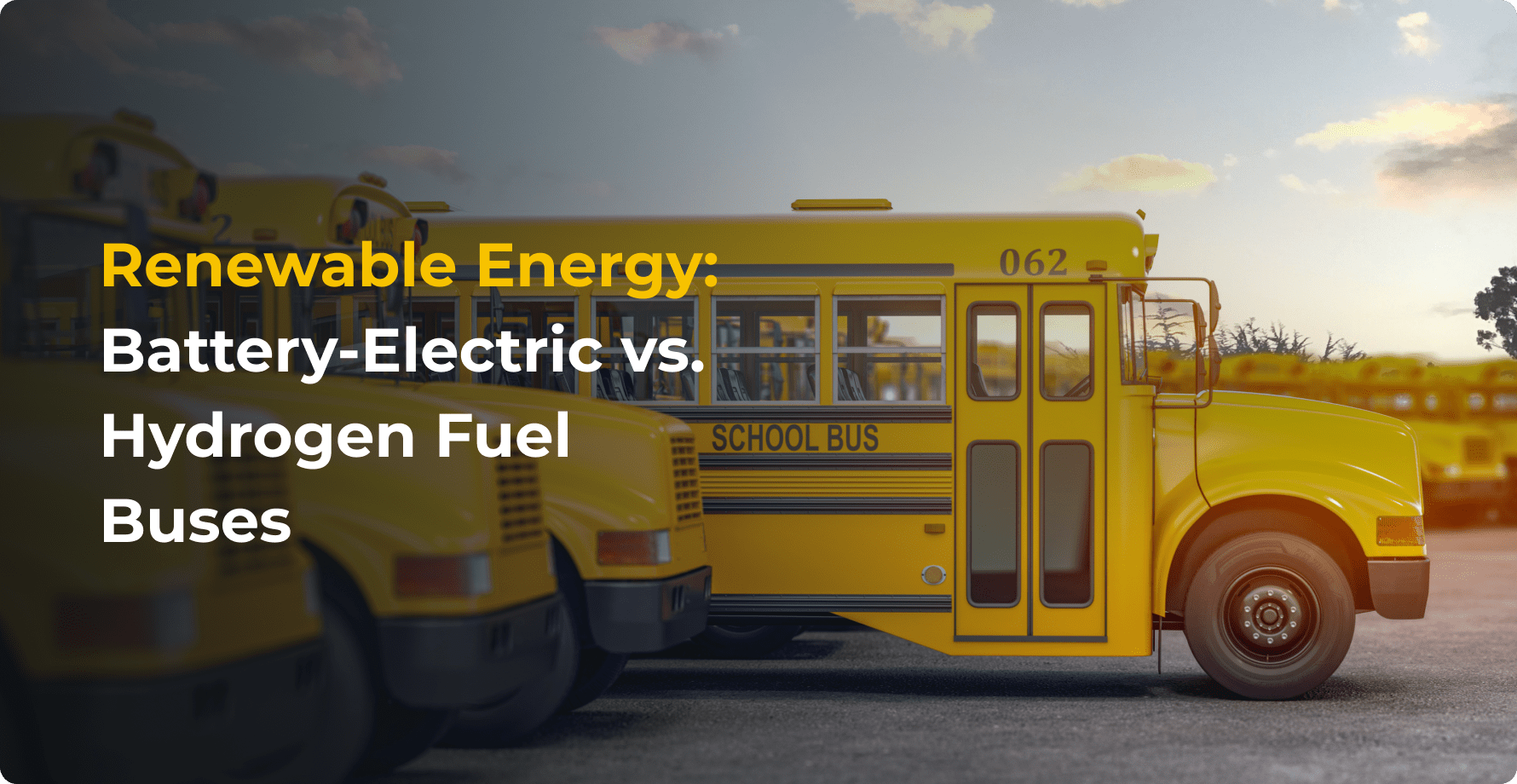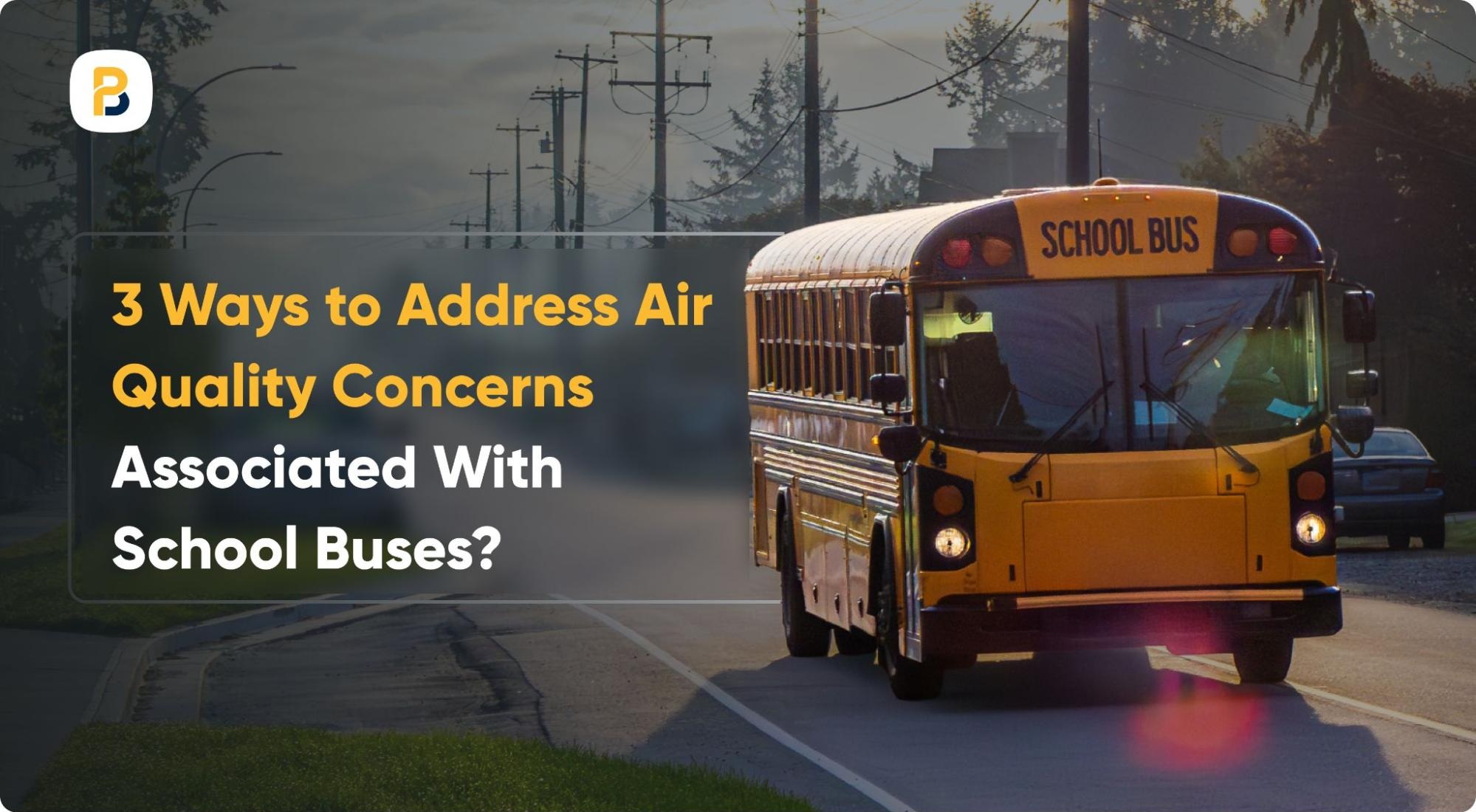Every year diesel school buses emit 8.4 million metric tons of greenhouse gases in North America. With school buses being the largest mass transit system in the region, these fuel emissions contribute to global warming, deteriorating health conditions, air pollution, and noise pollution.
In recent years, battery-electric buses (BEVs) and hydrogen-fuel buses (FCEV) have been seen on the road, to combat the cons of gas-powered vehicles. What are the pros and cons of the alternatives is what we’ll explore and how we can aim for a better and safer environment.
Battery-Electric Vehicles
Battery-electric vehicles (BEVs) run entirely on electricity, using rechargeable batteries to power an electric motor. These vehicles need specialized power stations so they can be charged as needed.
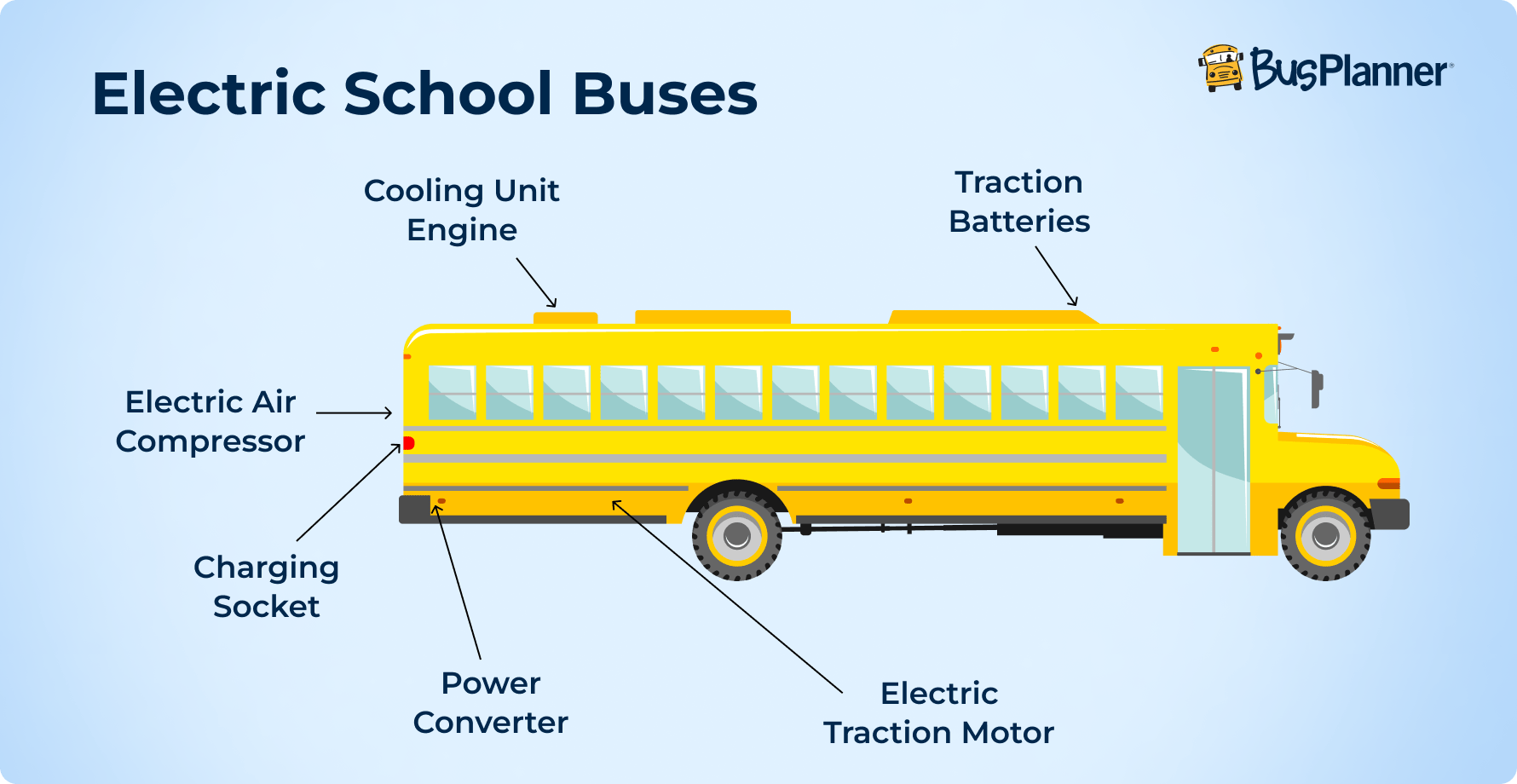
Pros:
- Environment Friendly: Electric buses have zero tailpipe emissions, meaning no harmful chemicals are released into the air, putting children’s health in danger. They also operate quietly, reducing noise pollution. Cleaner buses have even been linked to higher school attendance. In addition, battery-powered buses have 70% lower global warming emissions than diesel or natural gas buses.
- Lower costs: Running on battery power means there is a significantly lower operational cost as electric school bus costs 14 cents a mile to operate versus 49 cents for diesel buses.
- Increased Energy Supply: While these buses are not being used, they can sell extra energy back to the grid during peak hours.
Hydrogen Buses
These buses have fuel cells that are located on the roof, which creates energy when the hydrogen, stored within tanks, and the oxygen in the air come in contact with each other. Which also means they create energy even when they are not in motion.
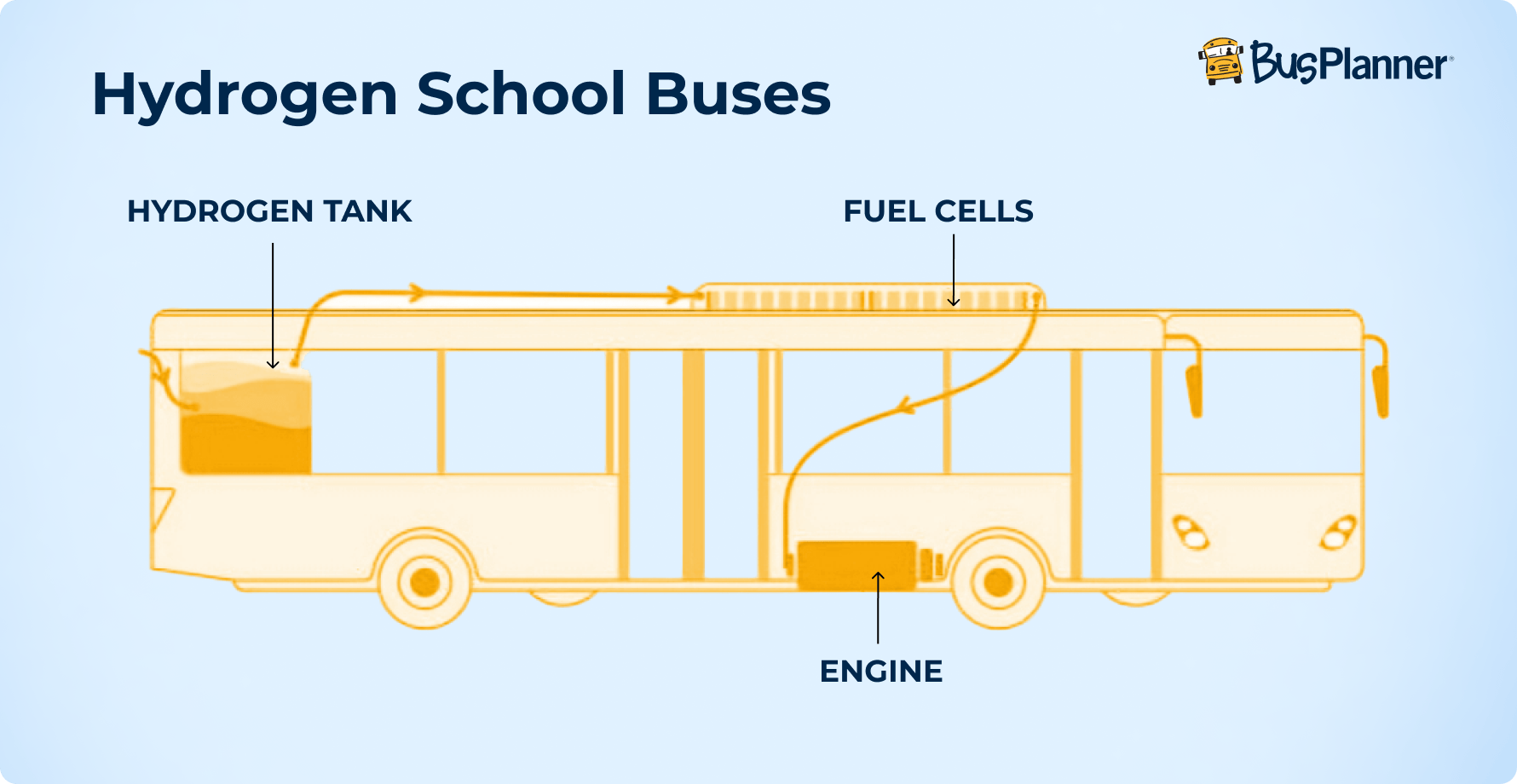
Pros:
- High Performance: The average range of hydrogen fuel cell buses (FCEV) can exceed 200 miles, which translates into increased vehicle efficiency and reduced refueling frequency.
- Timely Repairs: The key advantage of hydrogen buses is the short refueling time, which is on average 15 minutes.
- Environmentally Friendly: The only by-products created by the buses are heat and water, with zero harmful emissions. Experts estimate that in this way, a hydrogen bus saves up to 1690 tons of CO₂ emissions over a 12-year life.
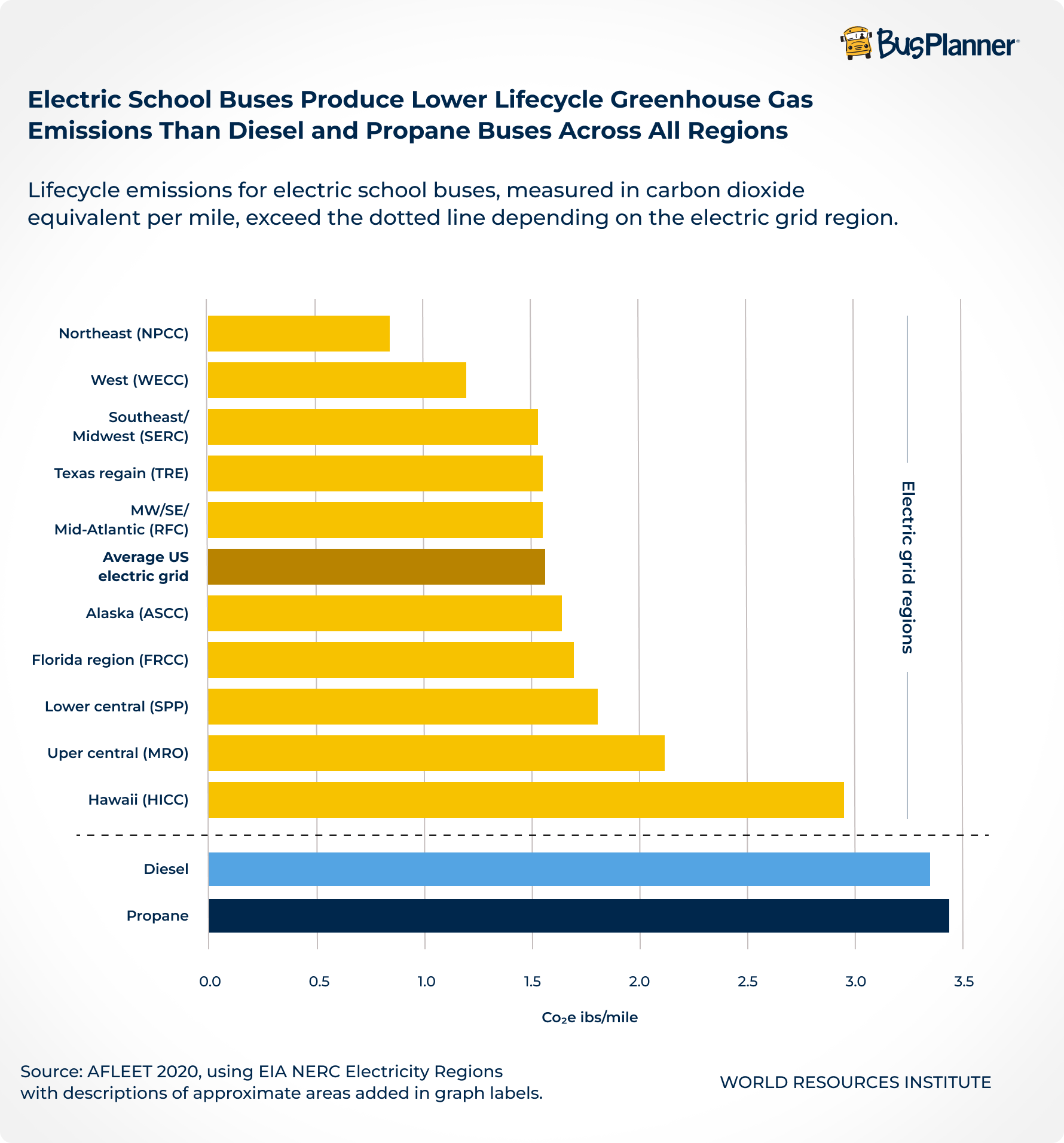
Drawbacks
While both options are eco-friendly, both have certain drawbacks that need to be considered.
- High Costs and Infrastructure: An electric bus costs about $350,000, three times the cost of a diesel bus. Replacing the roughly 480,000 school buses already on the road is a big enough expense, but the bigger challenge is upgrading the power grid so that it can support the charging infrastructure to keep these fleets on the road. Even though schools are being supported financially, until there is a wider supporting structure in place, these buses cannot operate as efficiently. Similarly, Hydrogen buses require dedicated infrastructure for refueling, which can be expensive to build and maintain.
- Long Charging Time: Electric buses take between two to eight hours, which does not make them very efficient in terms of usage. It also means that their range is limited as they can travel a maximum of 300Km on a single charge. Hydrogen buses’ travel range is further reduced, and the fuel cells need to be replaced regularly.
What Is Sustainable for the Future?
As governments continue to encourage school districts to invest in electric buses, build supporting infrastructure, and the cost of batteries decreases with innovation, battery powered buses will become more widely used.
